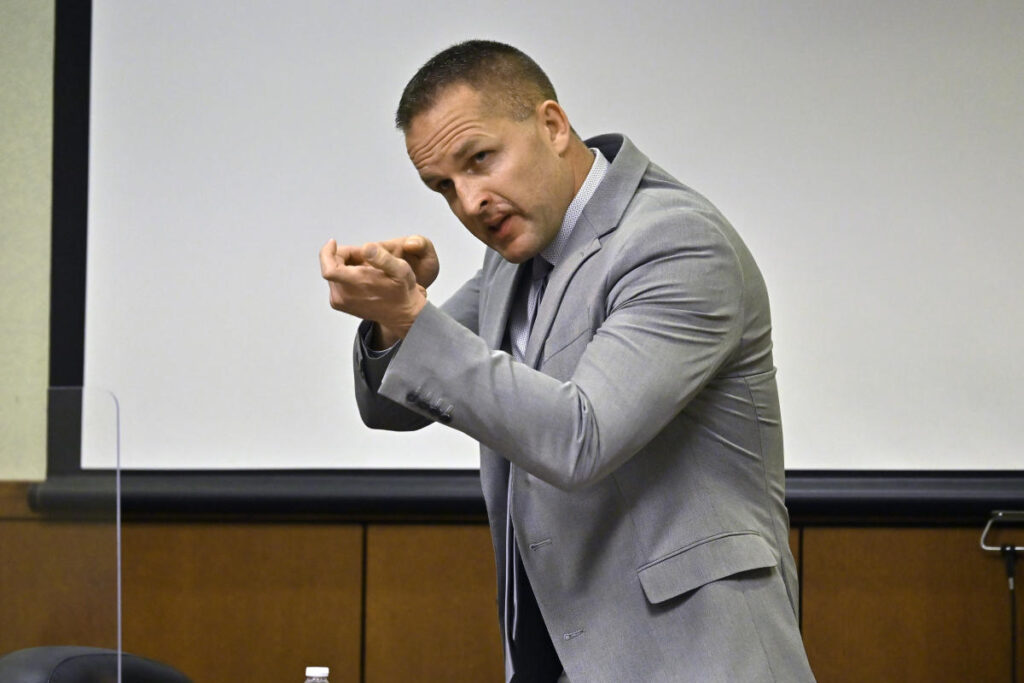A federal jury in Louisville, Kentucky, found former police detective Brett Hankison guilty of using excessive force during a botched raid that resulted in the tragic death of Breonna Taylor in March 2020. This marks a significant moment in the ongoing struggle for accountability within law enforcement, as it is the first conviction of a Louisville police officer linked to the highly contentious raid. The jury, consisting of twelve members, deliberated for over 20 hours across three days before delivering their verdict, which was met with emotional reactions from several jurors. Earlier in the evening, they had acquitted Hankison of charges related to using excessive force against Taylor’s neighbors, demonstrating the complexities of the case.
Hankison fired multiple shots during the raid, aiming his weapon at Taylor’s apartment without confirming whether anyone was inside. The circumstances leading to Taylor’s death ignited nationwide protests against racial injustice, paralleling the outcry following the death of George Floyd in Minneapolis. A key point of contention during the trial was the fact that Hankison’s shots did not hit anyone, as they penetrated Taylor’s door and windows. However, the repercussions of his actions were severe, contributing to the chaos that led to Taylor’s death. Previously, a jury had deadlocked on federal charges against Hankison, and another jury acquitted him on state-level charges of wanton endangerment.
Throughout the trial, Hankison maintained his defense by arguing that he was acting in self-defense, claiming that his actions were intended to protect the lives of his fellow officers during a chaotic situation. The defense emphasized the rapid sequence of events during the raid, effectively framing Hankison as a reactive agent responding to perceived danger once Taylor’s boyfriend, Kenneth Walker, fired upon the officers. However, prosecutors challenged this narrative, arguing that Hankison acted recklessly and without proper identification of a target. They underscored that firing indiscriminately into a closed space is a violation of fundamental rules surrounding the use of deadly force.
A crucial point during the trial surfaced when the jury posed questions to U.S. District Judge Rebecca Grady Jennings, indicating their confusion about whether it was necessary to prove that Breonna Taylor was alive at the moment Hankison pulled the trigger. This question reflected the profound legal and moral complexities surrounding the case. Ultimately, the prosecution was tasked with demonstrating that Hankison’s actions were unjustifiable, highlighting that he violated critical protocols by firing shots in an ambiguous situation.
The broader implications of this verdict resonate deeply within communities grappling with issues of police misconduct and systemic racism. While this conviction represents progress, it remains part of a larger narrative that includes uncharged officers who contributed to Taylor’s death. Despite Hankison’s conviction, neither of the other officers involved in the shooting were charged, as federal and state prosecutors determined their actions were justified following Walker’s initial gunfire. This suggests a complicated landscape where accountability is unevenly distributed, contributing to ongoing frustrations among advocates for police reform.
As the nation continues to grapple with the consequences of the Taylor case, the outcome of Hankison’s trial serves as a critical milestone in the pursuit of justice. The conviction demonstrates the legal system’s potential for enforcing accountability against police officers who use excessive force, signaling a crucial step toward reform. Yet, with substantial work remaining to achieve comprehensive change within law enforcement, many activists and community leaders emphasize the need for continued advocacy to ensure that systemic issues of racism, accountability, and police violence are addressed comprehensively going forward.

